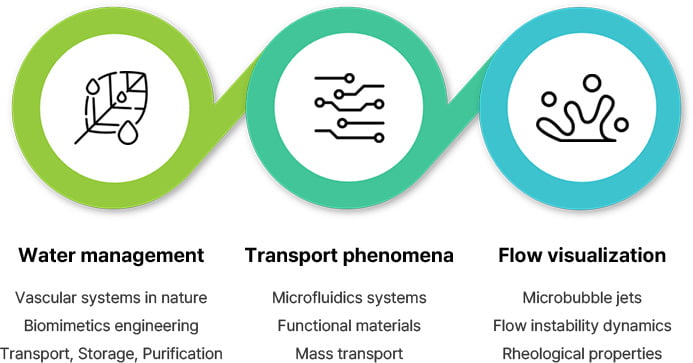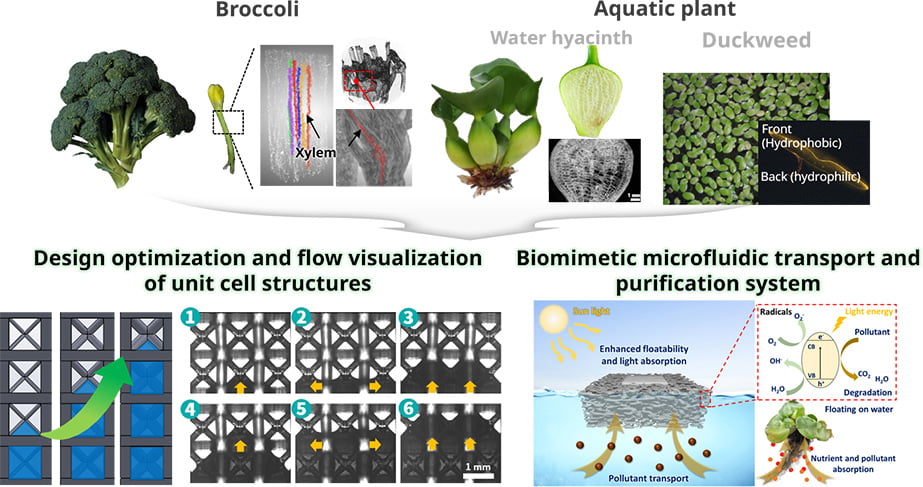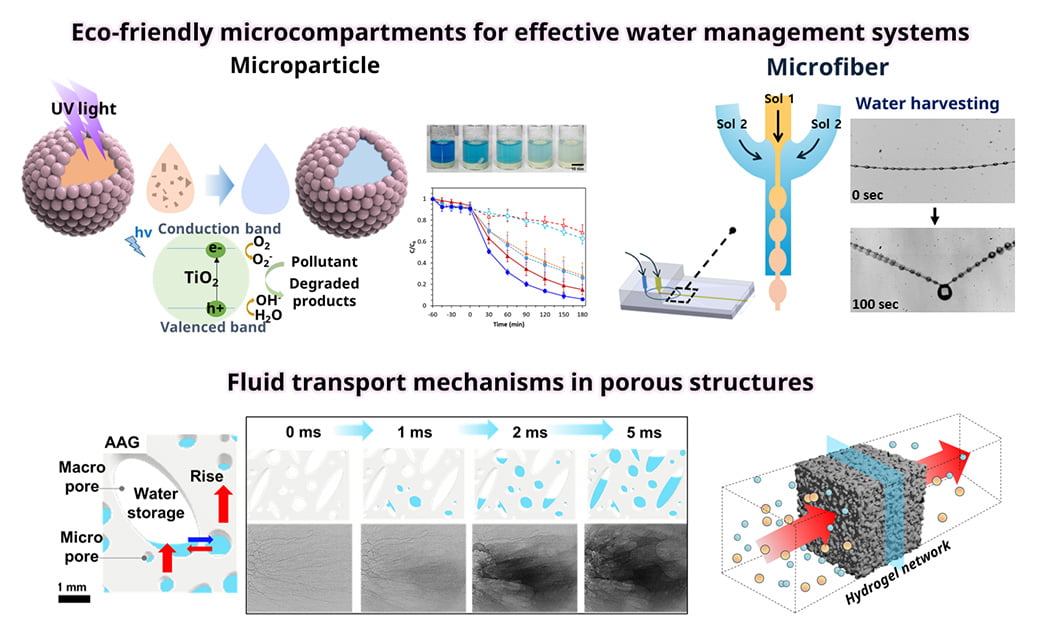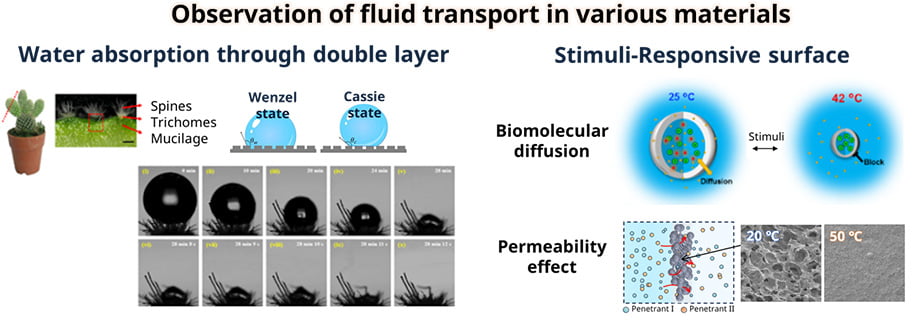From Natural Hydrodynamics to Bio-Inspired Fluid Management
We investigate the hydraulic principles of plants with unique water transport and purification systems, such as densely branched vascular plants and
aquatic plants. By analyzing xylem structures and wettability asymmetry, we explore nature’s strategies for efficient fluid control. Xylem-inspired unit cell
structures, mimicking the hierarchical water transport pathways of plants, are designed through flow visualization; in parallel, photocatalytic water purification
systems with enhanced floating stability are developed based on the structural features of floating plants. These bio-inspired microfluidic platforms offer a
sustainable approach to fluid management and high-efficiency contaminant removal.




